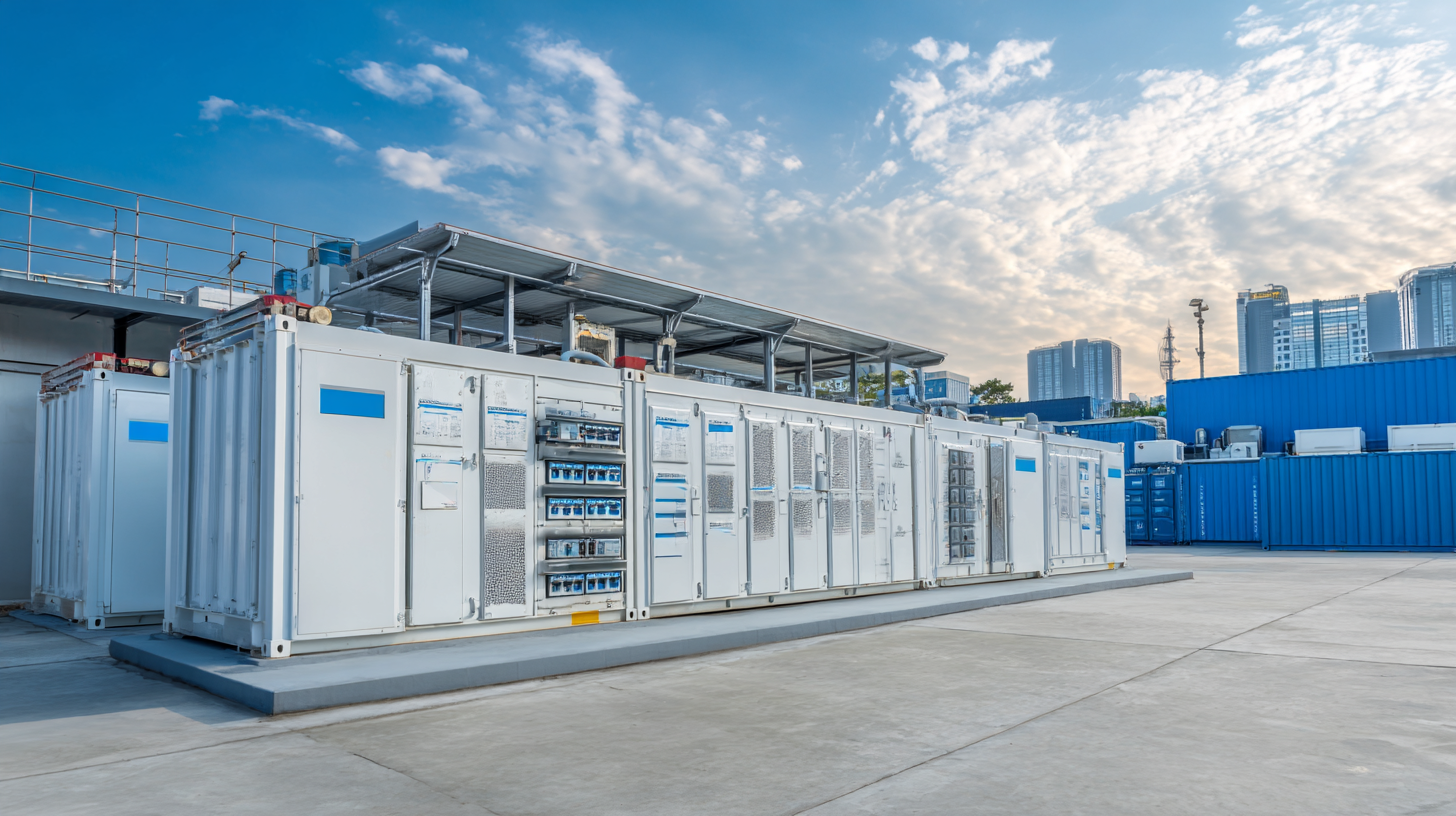How to Choose the Best Energy Storage Battery for Your Business Needs
As businesses increasingly seek sustainable energy solutions, the choice of an Energy Storage Battery has become a critical factor in enhancing operational efficiency and reducing costs. According to a report by BloombergNEF, the global energy storage market is expected to grow to over 1,000 gigawatt-hours by 2040, reflecting a compound annual growth rate of 30% from 2020 levels. This surge is driven by the rising adoption of renewable energy sources and the urgent need for grid stability. However, with a multitude of battery technologies available — from lithium-ion to flow batteries — selecting the best Energy Storage Battery for your specific business needs can be daunting. This blog aims to provide a comprehensive comparison of various energy storage solutions, empowering businesses to make informed decisions that align with their energy goals and operational demands.

Factors to Consider When Selecting Energy Storage Batteries for Businesses
When selecting energy storage batteries for business needs, several critical factors must be considered to ensure optimal performance and sustainability. One significant aspect is the type of battery technology. Recent developments indicate a shift towards non-lithium alternatives, such as sodium-ion batteries, which are gaining traction due to their lower environmental impact and potential for cost-effective storage solutions. Industry reports highlight that sodium-ion batteries can provide comparable performance to traditional lithium-ion batteries, making them a viable option for businesses looking to reduce their carbon footprint.
Another crucial factor is the economic viability of the chosen energy storage technology. Evaluating the revenue potential is essential, as many businesses underestimate the financial benefits of energy storage systems. Reports reveal that the global energy storage market is projected to grow significantly, driven by the demand for renewable energy integration. Furthermore, optimizing the placement and sizing of these systems can enhance operational efficiency. Hybrid optimization methods, which consider various energy sources such as solar and diesel alongside battery systems, can help businesses make informed decisions about site selection and investment in energy storage technologies.

Market Trends in Energy Storage Solutions: Insights for 2025 and Beyond
The energy storage market is set to thrive in the coming years, reaching a projected value of USD 5.12 billion by 2026. This growth is largely driven by the escalating demand for renewable energy sources and the transition towards sustainability across numerous industries. Companies are increasingly recognizing the importance of energy storage solutions, not only to enhance operational efficiency but also to meet their sustainability goals.
Tips: When selecting an energy storage battery, businesses should consider their specific energy needs and the types of renewable energy they utilize. Conducting a thorough analysis of energy consumption patterns can reveal optimal storage capacities. Additionally, integrating smart technology can help manage energy use more effectively, translating into lower operational costs.
As organizations gear up for 2025 and beyond, they must stay attuned to market trends, such as advancements in battery technologies and regulatory changes. By embracing innovative energy storage options, businesses can not only mitigate the risks associated with power shortages but also position themselves as leaders in the sustainable energy landscape. Exploring partnerships with technology providers might also enhance operational capabilities and foster resilience in increasingly complex energy markets.
Comparative Analysis of Different Battery Technologies for Commercial Use
When selecting an energy storage battery for commercial use, understanding the comparative advantages of different battery technologies is crucial. Lithium-ion batteries, dominating the market, possess high energy density and long cycle life, often exceeding 5,000 cycles. According to a 2022 market analysis by BloombergNEF, lithium-ion technology accounts for approximately 87% of the global battery storage market due to its efficiency and decreasing costs, projected to fall below $100 per kWh by 2025.
On the other hand, lead-acid batteries, while more affordable initially, have a significantly shorter lifespan of around 1,000 cycles and lower energy density. Research from the National Renewable Energy Laboratory highlights that while lead-acid batteries might suit certain short-term applications, the overall long-term economic viability leans heavily toward lithium-ion solutions. Moreover, emerging technologies such as solid-state batteries show promise, potentially offering higher energy densities and improved safety standards, with estimates suggesting they could capture a substantial share of the market by 2030, driven by innovations in materials and manufacturing processes.
Comparative Analysis of Different Battery Technologies for Commercial Use
This chart compares the capacity (in kWh) and cycle life of various energy storage battery technologies suitable for commercial applications. The data illustrates the performance each technology offers, helping businesses make informed decisions based on their specific needs.
Cost-Benefit Evaluation of Energy Storage Options for Businesses
When evaluating energy storage options for businesses, a robust cost-benefit analysis is essential. Various types of energy storage technologies, such as lithium-ion batteries, flow batteries, and traditional lead-acid batteries, each come with distinct advantages and disadvantages that can significantly impact operational costs. For companies looking to minimize energy expenses while maximizing efficiency, understanding the initial investment, maintenance costs, and potential savings on energy bills is crucial. Conducting a thorough evaluation enables businesses to identify which technology aligns best with their specific energy needs and financial goals.
In addition to cost assessment, the scalability and integration capabilities of energy storage systems should not be overlooked. Businesses need solutions that can grow with their energy demands and seamlessly integrate into existing infrastructures. By considering these factors, organizations can make informed decisions that not only address their current energy challenges but also pave the way for future advancements in energy management. For example, companies that successfully adopt advanced storage solutions can expect improved reliability and resilience in their energy supply, ultimately strengthening their operational framework.
How to Choose the Best Energy Storage Battery for Your Business Needs
| Battery Type | Capacity (kWh) | Lifespan (Years) | Cost ($/kWh) | Round-Trip Efficiency (%) | Use Case |
|---|---|---|---|---|---|
| Lithium-Ion | 100 | 10 | 300 | 90 | Commercial Applications |
| Lead-Acid | 200 | 5 | 150 | 75 | Backup Power |
| Flow Battery | 400 | 10-20 | 250 | 80 | Large Scale Storage |
| Nickel-Metal Hydride | 100 | 7 | 400 | 85 | Hybrid Applications |
| Sodium-Ion | 150 | 5-10 | 200 | 88 | Renewable Integration |
Regulatory and Incentive Framework Impacting Energy Storage Adoption in 2025
As businesses increasingly turn to renewable energy solutions, understanding the regulatory and incentive frameworks shaping energy storage adoption in 2025 is crucial. In regions like Europe, recent legislative developments have provided a strong foundation for the expansion of energy storage technologies. The European Commission's new State aid framework, for example, supports the Clean Industrial Deal, positioning member states to bolster initiatives for clean energy transitions. This proactive approach is essential for businesses aiming to align with environmental standards while benefiting from governmental incentives.

Meanwhile, the U.S. energy industry is also witnessing a surge in interest towards long-duration energy storage (LDES) technologies. Insights from industry experts reveal that favorable public policy and economic forces are driving this trend. Utilities are adapting to the growing demand for grid-scale storage solutions, acknowledging their role in achieving sustainability goals. Countries in Latin America, particularly Chile, are leading the way in deploying energy storage projects, showcasing the significance of strong regulatory support in fostering innovation and growth within the sector. As we approach 2025, businesses must stay informed about these evolving frameworks to effectively harness the potential of energy storage.
